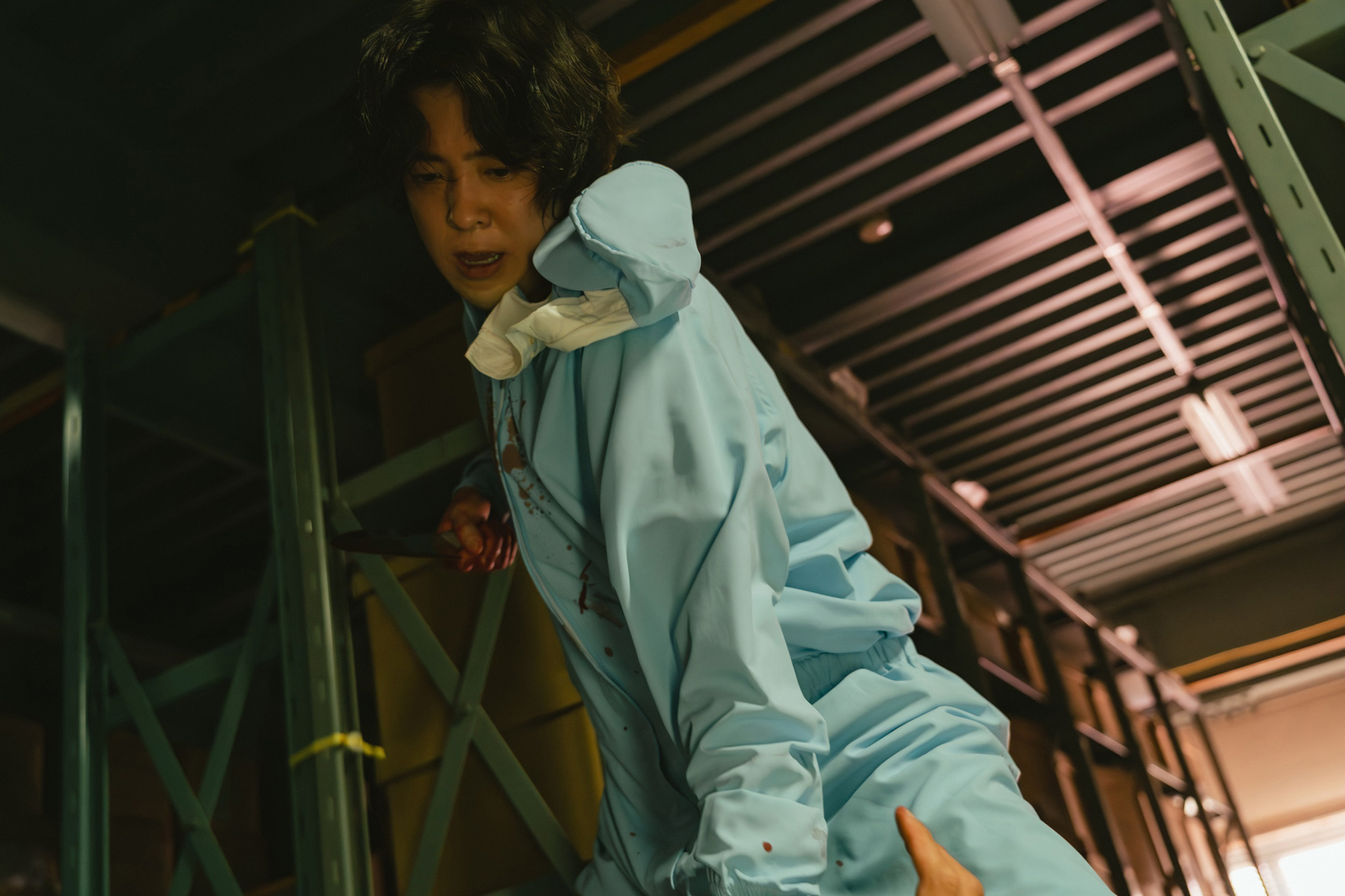If there is one narrative dynamic that Japanese directors and writers have fully mastered, it is the dynamic of manipulating time. From simple time-travel narratives, like Thermae Romae (2012), Labyrinth Of Cinema (2019) and Summer Time Machine Blues (2005), to time-loop stories like The girl Who leaped Trough Time (1983), Beyond the Infinite Two Minutes (2020), and Mondays: See You ‘This’ Week! (2022), River (2023), there is something for everyone’s taste.
With the over-abundance of time-twisting narratives within Japanese cinema, it might seem increasingly difficult to offer something new and fresh. Yet, the over-abundance of such narratives does not only prove that twisting time is a beloved narrative mechanic for Japanese writers and directors, but that the possibilities of this dynamic are endless. Shinji Araki, whom spectators will know from his unique debut feature The Town of Headcounts (2020), is the latest director who utilizes the time-loop dynamic in a fresh and exciting way.
Shinji Araki’s second feature Penalty Loop employs the time-loop to offer a playful exploration on Freud’s concept of repetition compulsion. Jun Iwamori (Ryuya Wakaba) finds himself imprisoned within a loop where he is compelled to reenact the vengeful act of killing the murderer of his girlfriend Yui Sunahara (Rio Yamashita). This repetition soon reveals itself to be empty, a mechanistic concatenation devoid of any sense and lacking any kind of subjective impact. Despite the lack of emotion by which Jun delivers his vengeance, his imprisonment is defined by jouissance. It is this excess of enjoyment which returns again and again to transgress the limits of the pleasure principle and seek death that compels him to continue killing the murderer. It is his body that enjoys beyond his conscious will to extract pleasure.
Jun’s subjection to this joyous return is, as the narrative implies, caused by the trauma of the Yui’s murder. This shocking event did not only disturb his subjective equilibrium, but washed all the meaning that stuffed his ego away. This clinging to jouissance is, in this sense, the final support he can utilize to stabilize his own subject, to keep him symbolically alive while wandering the path of Real death.
Yet, the subjection to jouissance has no other aim that enjoyment and, ultimately, death itself. With the destructive finality of this repetition, it is not surprising that the clash between his conscious wish to quit the senseless murdering and the compulsion to repeat his vengeful act comes to the forefront later in the narrative. Yet, how can Jun break the hold his jouissance has over him, this compulsion to repeat beyond meaning (Narra-note 1)?
Jun’s compulsion to enact his vengeance does not mean that every repetition unfolds the same. After a few murderous loops, Shun realizes – and this is the first twist within the narrative – that his target (Yusuke Iseya) is conscious of the violence he will be subjected to. This consciousness does not only turn the time-loop narrative into a tensive cat-and-mouse-like game, but introduces another narrative riddle: How can Jun deal with his target’s consciousness?
We will refrain from delving deeper into the narrative as such exploration might rob the spectator of his enjoyment. Yet, we can, however, introduce questions Penalty Loop ultimately raises concerning vengeance and its subjective reparative effect. Can the vengeful act erase the not yet worked-through loss? Is the signifier not a better path to take when dealing with loss? Does the path of vengeful repetition not ultimately give birth to one’s own destructive impulses, one’s own death drive?
The way Araki resolves the problem of his target’s consciousness and the abovementioned question will not be able to satisfy every spectator. While the narrative shift might appear strange and seemingly illogical to many spectators, it is animated by Araki’s narrative attempt to humanize the murderer and explore, via some flashback’s sequences, the self-deceptive nature of loving another at the level of the image – the radical difference between the image of our beloved and the subject repressed by this oppressive image.
Araki delivers a composition full of subtle dynamism – a mix of tracking moments, shaky framing, and lots of slow spatial camera movement. Slow-moving spatial dynamism is, in certain sequences, expertly utilized to disturb the mundane nature of the imagery and give it a premonitory quality.
Araki’s composition is moreover littered with many pleasing shot compositions. Araki succeeds in elevating the visual pleasure of his composition by exquisitely exploiting the geometrical dimension of certain interiors and accentuating the crafted visual tensions via the naturalistic yet darkish colour- and lighting-design.
Subtle musical decorations are utilized within the narrative to sensibly heighten the tension within the narrative space. Yet, as this tension has no ‘sense’ within the opening moments of the narrative, the evoked sense of suspense attains an anticipatory quality. Araki, by thoughtfully echoing that something is about to happen, succeeds in engaging the spectator – he tickles the spectator’s desire to know as well as his desire not-to-know.
Penalty Loop succeeds in delivering a nice twist on the time-loop dynamic, but the way Araki resolves the narrative’s thematical questions concerning vengeance and the working-through of trauma will divide spectators. In our view, it is the subtlety by which Araki raises questions and unfolds answers that will make the sudden shift from thriller to buddy-drama feel illogical to some spectators. Even so, Araki still delivers a narrative that is worth checking out.
Notes
Narra-note 1: The reveal that others are involved in Jun’s time-loop does not invalidate our reading. Rather, the external people involved represent his jouissance, of that what continues to enjoy beyond any kind of conscious refusal whatsoever.
The importance of this jouissance is first revealed, in the narrative, by the absence of any kind of emotion while performing the murderous act. Later, the inability to stop murdering shows that contract he has made with his jouissance, this bodily enjoyment.
Narra-note 2: Even though the narrative element of the contract introduces an unescapable end to the repetition, Shun makes a shift from meekly carrying out the will of his jouissance to using the signifier to address the murderer of his mysterious girlfriend.




